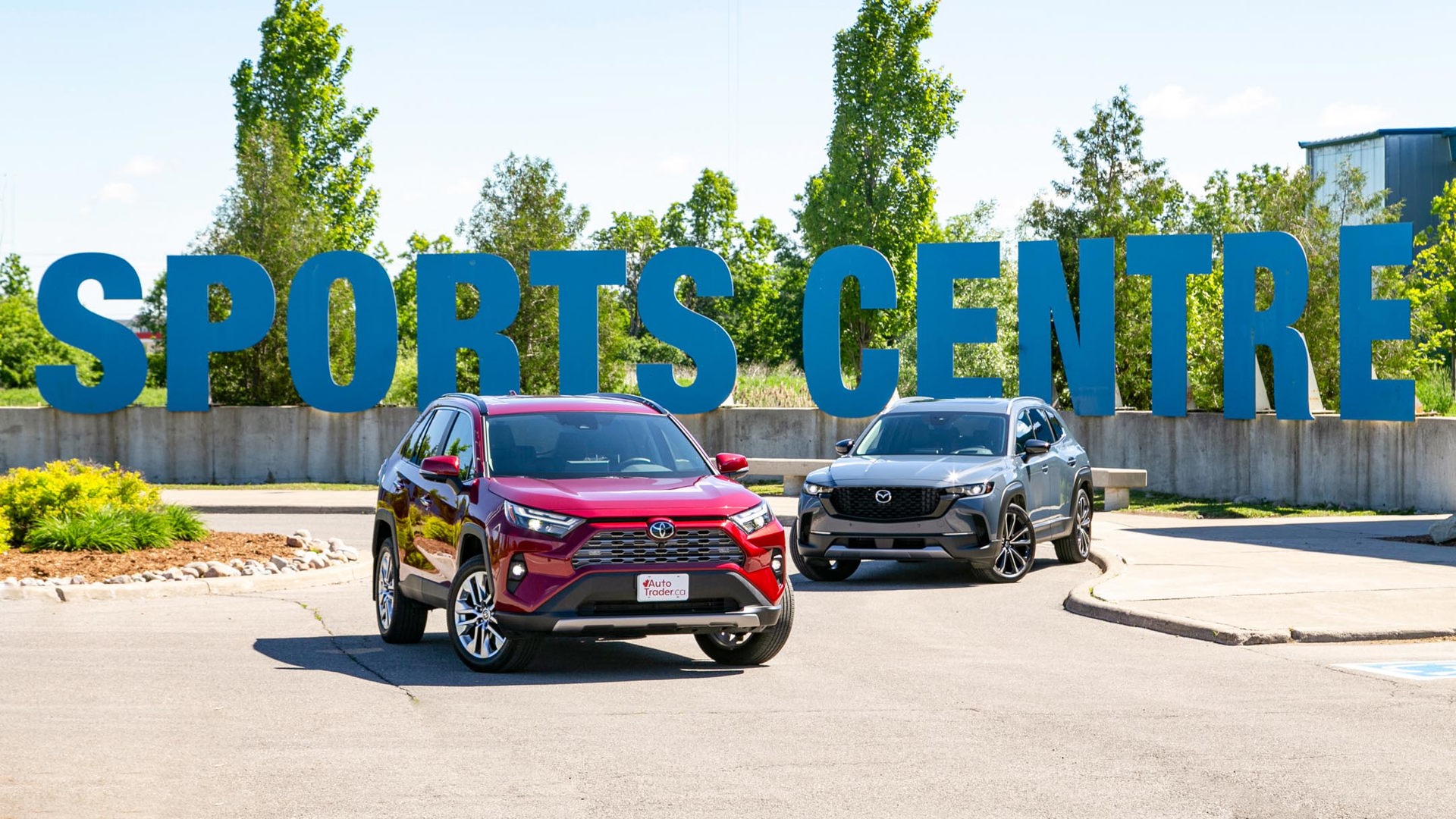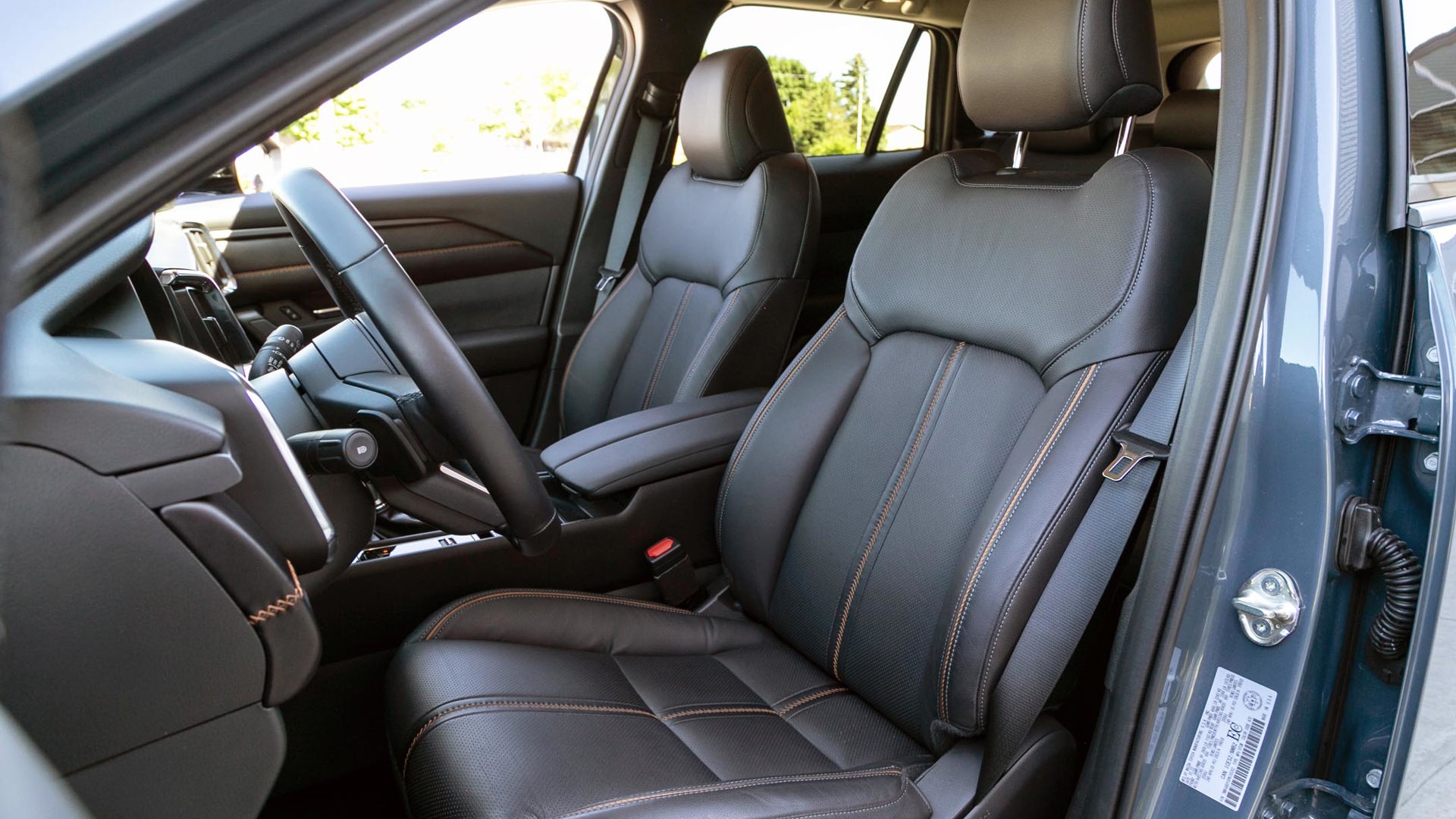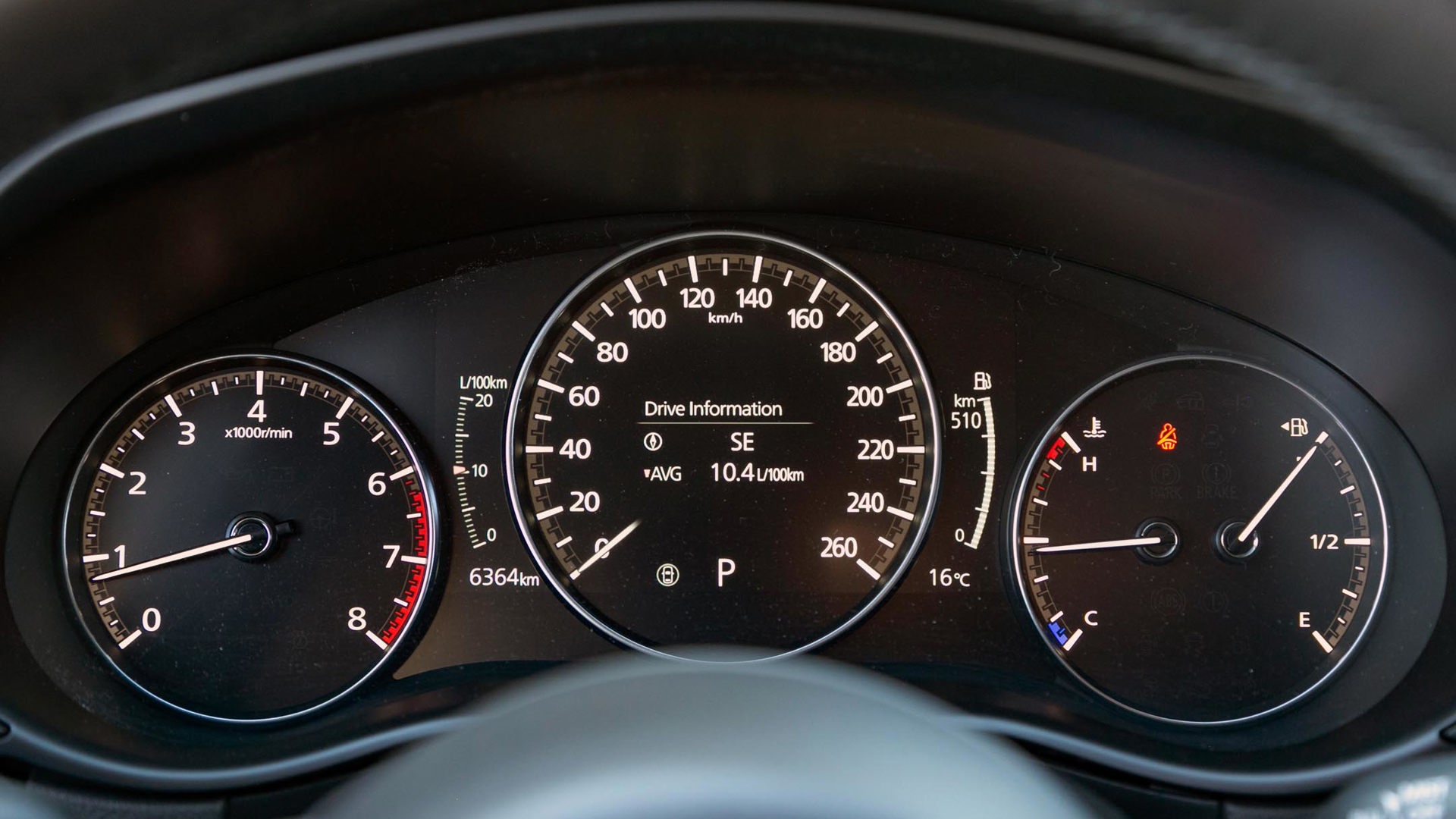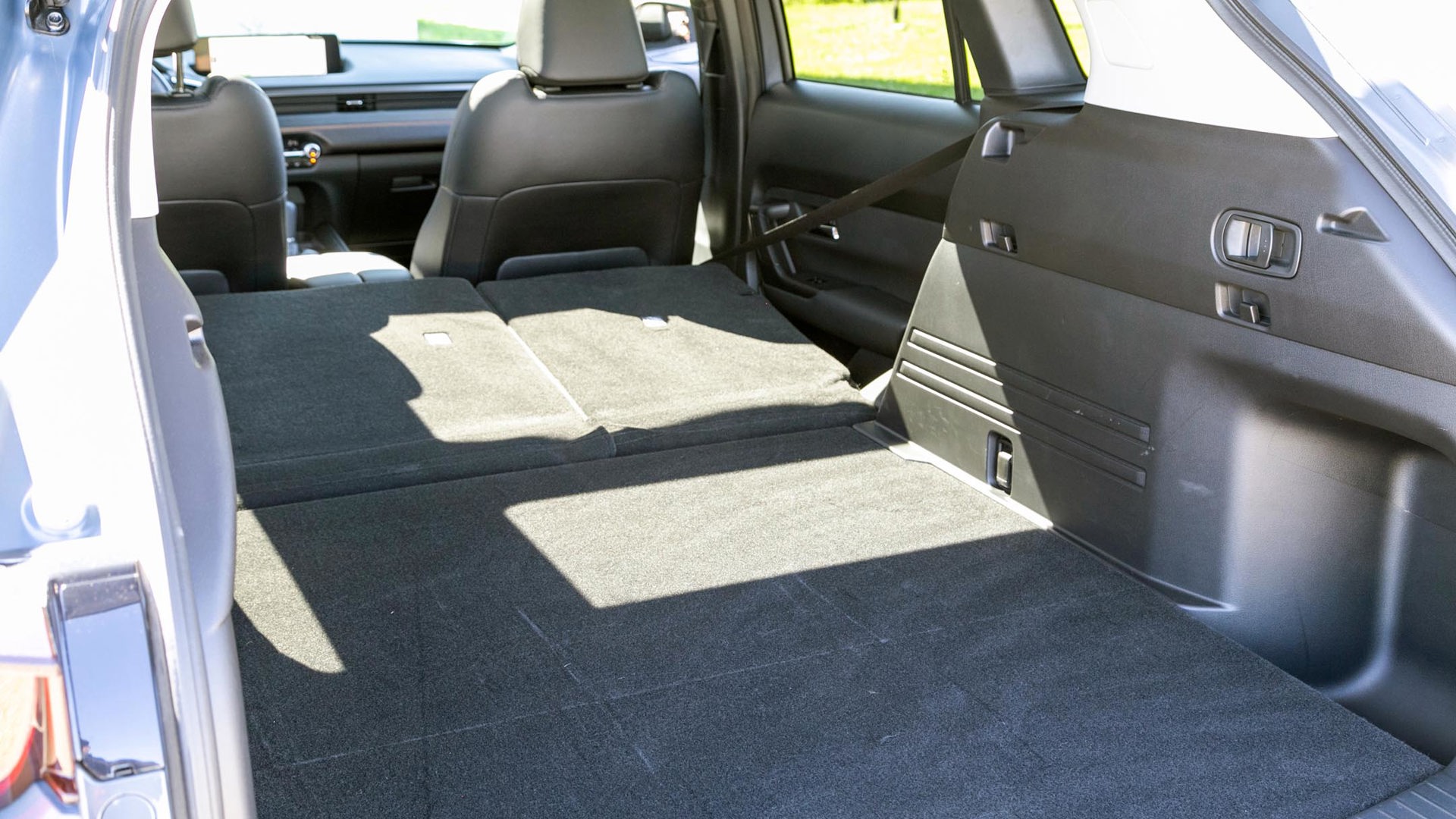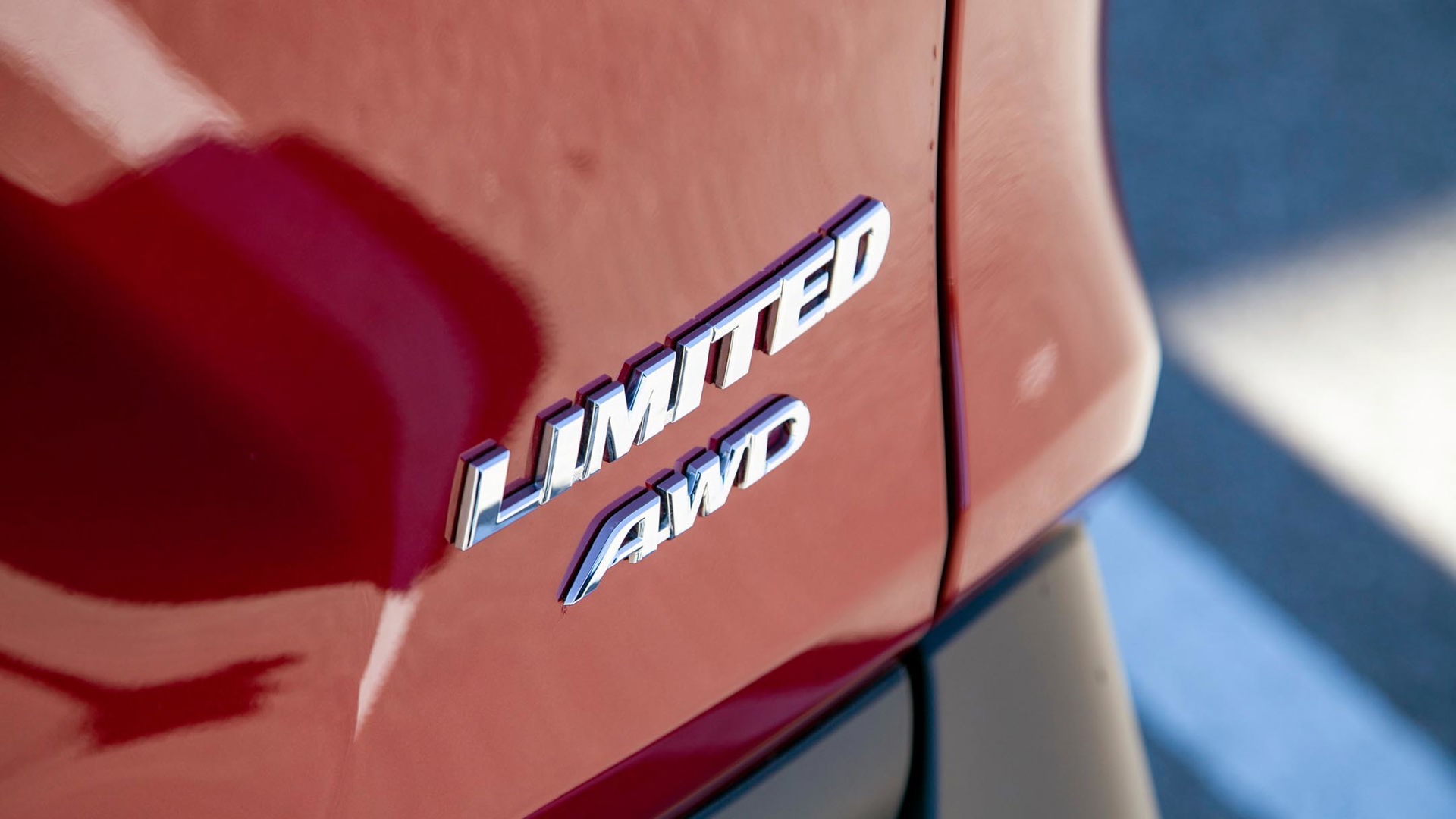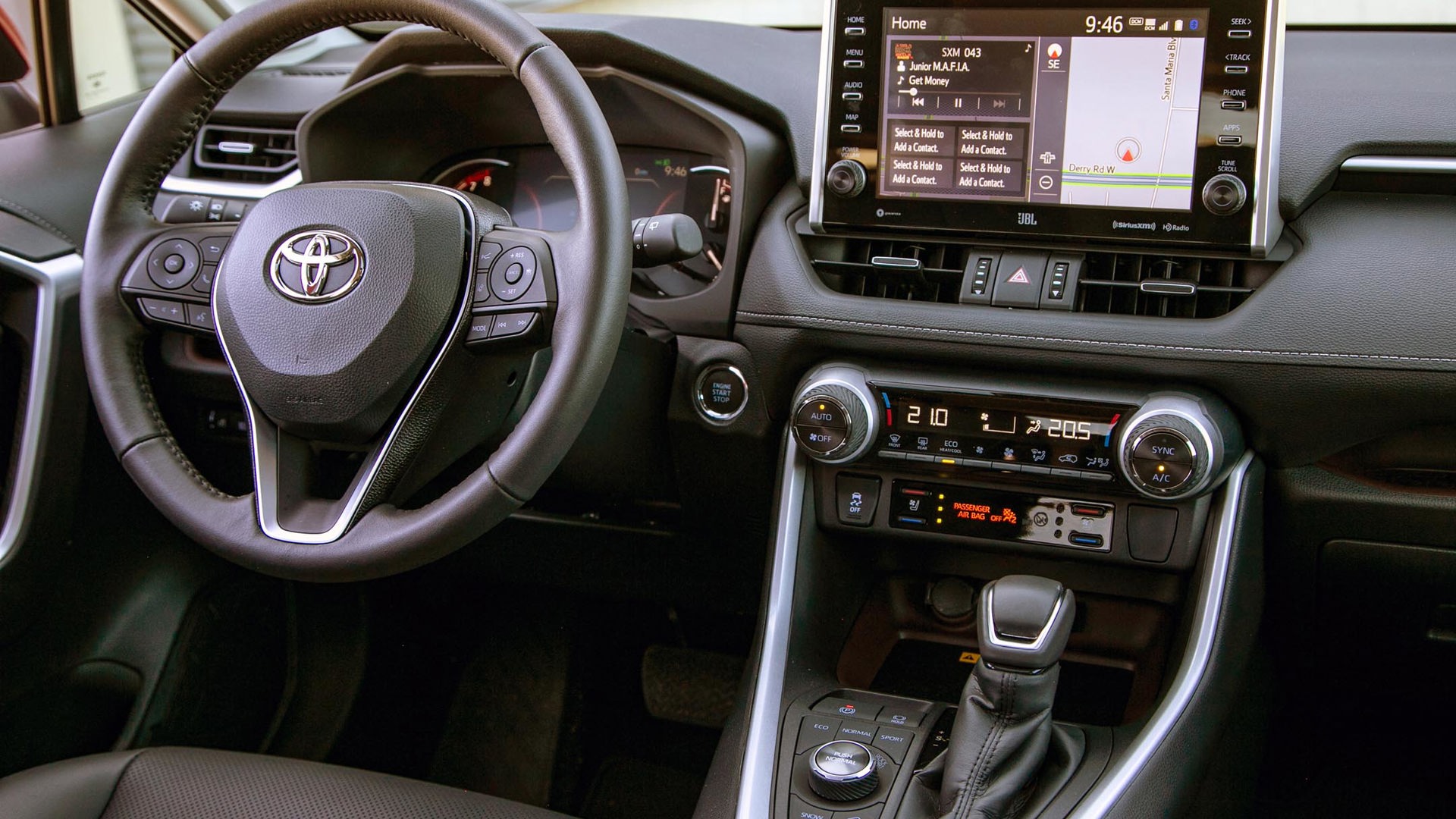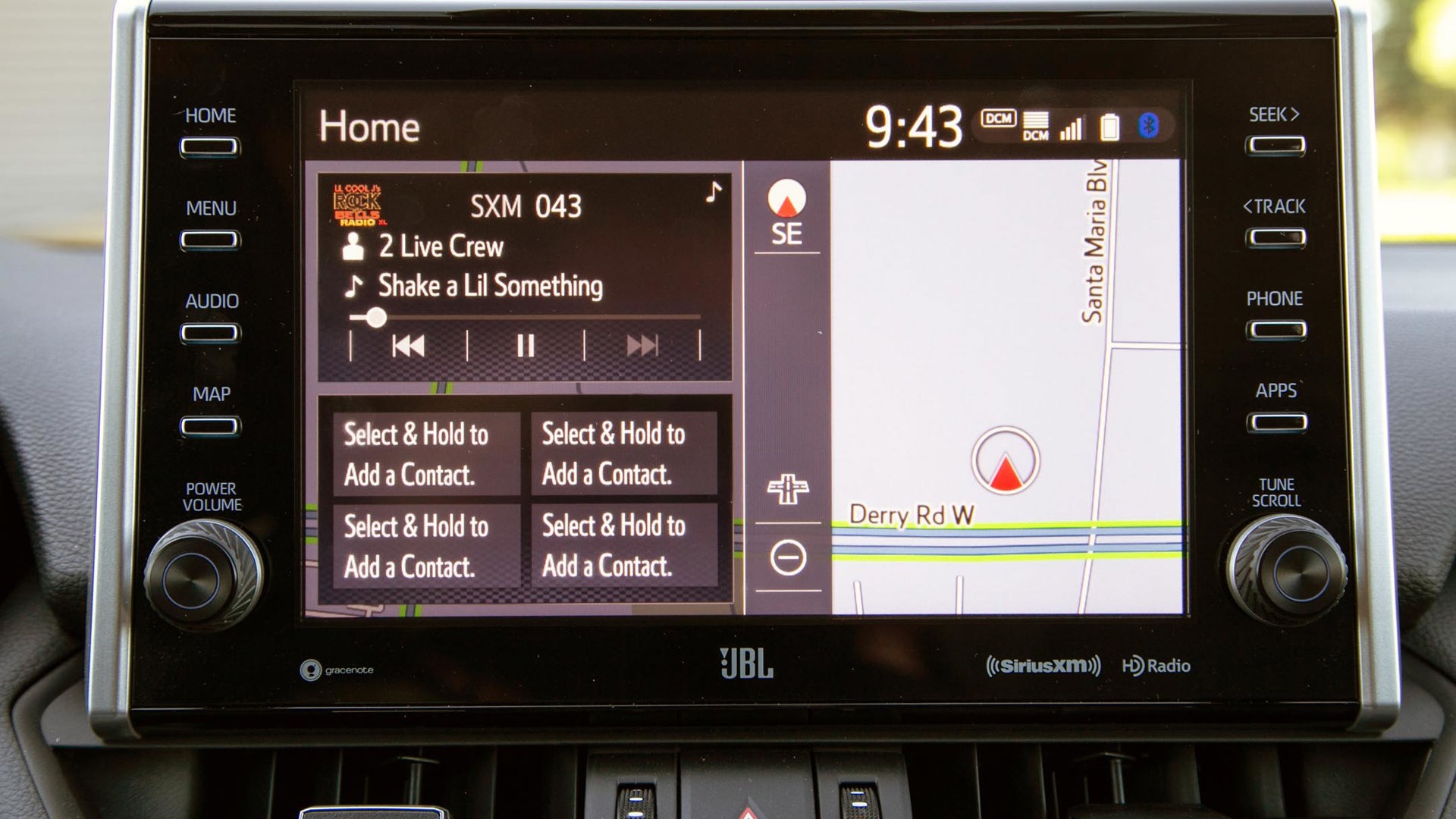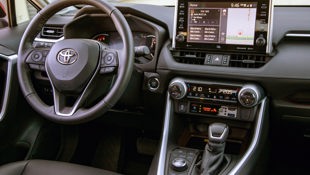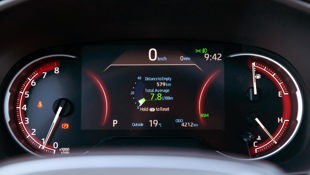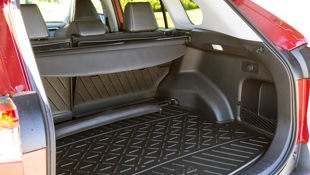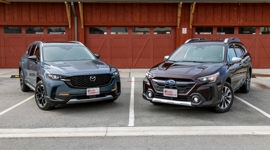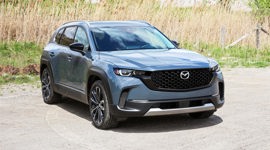Comparison Data
|
2023 Mazda CX-50 GT Turbo
|
2022 Toyota RAV4 Limited AWD
|
|---|---|
|
Engine Displacement
2.5L
|
2.5L
|
|
Engine Cylinders
Turbo I4
|
I4
|
|
Peak Horsepower
227 hp (regular unleaded), 256 hp (premium)
|
203 hp
|
|
Peak Torque
310 lb-ft (regular unleaded), 320 lb-ft (premium)
|
184 lb-ft
|
|
Fuel Economy
10.4 / 8.1 / 9.4 L/100 km cty/hwy/cmb
|
8.8 / 7.1 / 8.0 L/100 km cty/hwy/cmb
|
|
Cargo Space
889 / 1,595 L seats up/down
|
1,059 / 1,977 L seats up/down
|
|
Base Price
$42,850
|
$43,245
|
|
A/C Tax
$100
|
$100
|
|
Destination Fee
$1,950
|
$1,890
|
|
Price as Tested
$47,650
|
$45,490
|
|
Optional Equipment
$2,750 – Turbo engine option, $2,500; Polymetal Grey Metallic paint, $250
|
$255 – Metallic paint, $255
|
Last year, Toyota’s RAV4 wasn’t just the best-selling model in Toyota’s Canadian lineup but the best-selling SUV in the country, full stop.
It’s a formula that clearly resonates with Canadian car buyers: the RAV4 is right-sized, practical, sensible, reliable, and efficient. On top of all of that, it’s proudly built right here in Ontario.
What more could a consumer want, right? Buyers looking for a little more style and substance in their compact crossover might just want to consider the all-new 2022 Mazda CX-50 – an adventure-first five-seater that leans a little towards the luxurious end of the spectrum in its range-topping GT trim.
Styling
Rather than try to make the stylish and well-liked CX-5 be all things to all people, Mazda has stretched the CX-30 platform to create a complementary crossover that’s longer, lower, and wider, yet it’s also higher off the ground, giving it a trendy rugged appearance. And while impractical on anything close to rough stuff, the CX-50’s two-tone 20-inch wheels are certainly fashionable. Of course, Mazda’s designers have been slugging stylish home runs for years now, with a showroom full of handsome machines. Not even grey paint, nor oversized black plastic fender flares and rocker panels, can detract from the comparatively sleek Mazda’s profile.
Toyota’s RAV4 isn’t unattractive, but it’s a busier design language with more complexity and angles, and a particularly sour-looking frown on the little ute’s face. Taller and narrower, the RAV’s proportions are similar to most of the competitors in the class, and just a little dowdier than the Mazda’s upscale pretenses.
The same is true inside. Toyota’s designers look to have made the RAV4’s interior as sensible and practical as possible – certainly not bad qualities for an everyday utilitarian machine. But the Mazda is imbued with a sense of occasion, making it feel like a far more premium car than the Toyota. The seats, in particular, showcase the differences of approach with the RAV4’s vegan-friendly faux-leather surfaces (even if there is leather on the wheel and shifter) appearing rather plain next to the CX-50’s leather seats decoratively piped and accented by gorgeous stitching.
Mazda CX-50: 9/10; Toyota RAV4: 7/10
Comfort
Both crossovers are similarly comfy, with simply-shaped seats offering modest lateral support but firm cushioning. The larger CX-50 provides more legroom both front and rear, while surprisingly, it also offers more front headroom despite its notably shorter roof height.
Not so for the Mazda’s rear seat passengers, who’ll have a significant 50 mm (two in) less space for tall hairdos than in the Toyota, but a similarly-sized advantage in rear legroom. The Toyota’s taller greenhouse gives the RAV4 a brighter, airier cabin that’s easier to see out of.
Mazda CX-50: 7.5/10; Toyota RAV4: 7/10
Features
Our Limited trim is the most lavishly-appointed, non-electrified version of the RAV4. Buyers will enjoy keyless entry, automatic power tailgate operation, dual-zone climate control, heated seats front and rear, a heated steering wheel, cooled seats up front, and onboard navigation.
The CX-50 GT includes all of the above, but it’s also got a panoramic sunroof (compared to the smaller opening in the Toyota), plus a larger infotainment screen and wireless smartphone connectivity not found in the RAV4.
Mazda CX-50: 8/10; Toyota RAV4: 7.5/10
Safety
Both manufacturers should be commended for making a significant number of their active safety features standard equipment on both of these models. Toyota includes adaptive cruise control, pre-collision sensors with pedestrian detection and automatic braking, lane departure warning and mitigation, and automatic high-beam control.
Mazda’s standard package is similarly equipped, but requires our tester’s GT trim to get emergency lane keeping and blind-spot monitoring, plus low-speed rear automatic braking, traffic jam assist, and traffic sign recognition.
The RAV4 has earned a Top Pick from the Insurance Institute for Highway Safety (IIHS) and a five-star rating from the United States National Highway Traffic Safety Administration (NHTSA), while the Mazda is still too new to have been evaluated at the time of this writing.
Mazda CX-50: 9/10; Toyota RAV4: 10/10
User Friendliness
In typical Toyota fashion, the cockpit has been sensibly designed with switchgear within easy reach and the simplicity of physical buttons and knobs that are simple to use at a glance. The RAV4’s nine-inch touchscreen infotainment system is closer at hand than the Mazda’s 10.25-inch widescreen mounted further forward on the dash.
Both crossovers have a predominantly analogue gauge display flanking smaller screens, in both cases offering all the information a driver could need. The Mazda also provides a head-up display that’s a redundant gimmick, especially for anyone with polarized sunglasses that render it invisible.
Wireless smartphone chargers are present in each machine, but only the Mazda offers wireless Apple CarPlay and Android Auto connectivity. The CX-50’s system still utilizes the same console-mounted rotary controller and volume knob placement that takes a bit of muscle memory to become second nature, but the setup works just fine. Noteworthy, however, is that the screen is touch-sensitive, but only with those smartphone interfaces. And both machines have 360-degree camera views for parking, but the Toyota’s is so comically poor in resolution that it’s of very limited use compared to the brighter, sharper Mazda’s view.
Mazda CX-50: 9/10; Toyota RAV4: 8.5/10
Practicality
Neither one of these are ready to tackle the Rubicon Trail, but the Mazda’s marginally better ground clearance will allow it to climb over gnarlier terrain than the RAV4. With both driving all four wheels, they promise all-weather traction, upping their practicality versus most comparable compact crossovers.
The marginal concessions the RAV4 gives up to the CX-50 in terms of practicality are more than made up for in cargo space. The Toyota will haul 1,059 L of stuff behind its back seat, but if you fold that seat, there’s nearly 2,000 L of room available. These figures are 170 and 382 L greater than the Mazda’s cargo hold, respectively.
But if there’s a really sizable load to bring along, the Mazda (with its turbocharged engine) is rated to tow 1,588 kg (3,500 lb) compared to the Toyota’s meagre 680 kg (1,500 lb). Even the normally-aspirated GS-L trim of the CX-50 is still rated at 907 kg (2,000 lb), but curiously, the RAV4 in its slightly more rugged trim (but with the same drivetrain) is rated to pull the same as this turbocharged Mazda.
Mazda CX-50: 7.5/10; Toyota RAV4: 8/10
Power
This was supposed to be an evenly matched pairing with engine size and power outputs being pretty comparable, but Mazda sent a ringer with our GT model wearing a turbo badge and generating a whopping torque advantage over the Toyota. Both displacing 2.5L, the RAV4’s 203 hp is decent within the class, but its 184 lb-ft of torque is merely adequate, giving the Toyota just enough gumption to get up to speed but always leaving it feeling like it’s work to get there (with coarseness and noise from the engine bay to show for it).
The Mazda’s four-cylinder with forced induction started life in the larger CX-9 crossover, and has permeated most of the rest of the lineup, even turning the CX-30 and Mazda3 into properly quick machines. The result is 227 hp and 310 lb-ft of torque on regular fuel, as most owners are likely to do, but those figures jump to 256 hp and 320 lb-ft of torque for those spending to get 93-octane.
Not only does the turbocharged engine boost the CX-50’s towing capability, but it also makes the Mazda accelerate more effortlessly than the Toyota. Whether pulling away from a standstill or passing slower traffic at highway speeds, there’s abundant power available, and it’s not only noticeable but welcome.
Mazda CX-50: 9/10; Toyota RAV4: 7/10
Driving Feel
The Mazda’s six-speed automatic transmission may seem archaic with relatively few cogs, but it’s well-paired with the turbo engine’s power delivery and works just fine, delivering smooth shifts. The RAV4’s eight-speed automatic is also smooth-shifting, but when caught in too tall a ratio it only exacerbates the Toyota’s power disadvantage.
When driving them back-to-back on our loop that included a few twists and turns, some highway and some urban driving, the CX-50 drives like a costlier machine. Not only does it get up to speed easier and quicker, but once there its ride is decently composed, yet so are its handling manners, managing to feel more engaging than the RAV4, if not truly sporty.
The RAV4 doesn’t do anything wrong – it goes, stops, and turns just fine – but it’s simply an appliance to get its occupants from point A to point B without the benefit of any real steering feel. And although its ride is a bit softer than the Mazda’s, it lacks some of the balance between handling and ride quality. If these two were ice cream cones, the CX-50 would be chocolate with bright sprinkles on top, while the RAV4 would be a scoop of mashed potatoes. Both fill your belly, but only one brings joy.
Mazda CX-50: 8/10; Toyota RAV4: 7/10
Fuel Economy
Predictably, the Mazda’s turbocharged engine, fewer gears, and greater mass equate to a bigger spend at the gas pump. Officially, the CX-50 consumes at a rate of 10.4 L/100 km in the city, 8.1 on the highway, and 9.4 combined, whereas the impressively thrifty Toyota rates at 8.8 L/100 km around town, 7.1 on the open road, and 8.0 combined. Still, at the end of our mixed driving loop, the trip computers showed an average of 9.4 for the Mazda and 8.6 for the Toyota.
Mazda CX-50: 7/10; Toyota RAV4: 8/10
Value
Each of these SUVs is a well-equipped, practical daily-driver, and they’re both priced very similarly. The Mazda CX-50 with the turbo option tallies just over $47,000, without any options but with freight included, and $2,500 less if the turbo is skipped. Meanwhile, the RAV4 Limited splits the two CX-50s at a shade more than $45,000 before tax.
At the manufacturers’ current finance rates on a 60-month term, the turbocharged Mazda would cost a buyer a few Starbucks visits per month more than the Toyota, which seems like a small price for the added performance and features.
Buyers otherwise interested in the RAV4 may want to also consider the hybrid version, which only costs about $1,500 more than the non-hybrid and improves fuel efficiency – and power output.
Mazda CX-50: 7.5/10; Toyota RAV4: 7/10
The Verdict
Canadian buyers have snatched up the RAV4 in droves and for good reason. It’s a very well-built, practical, and efficient SUV that’s priced competitively. But it’s far from the only game in town, and the competitors are not sitting idly by while Toyota dominates this important segment. A new Honda CR-V is due this year, while Hyundai’s Tucson, the new Kia Sportage, and the Nissan Rogue are all worthy offerings. But between these two, Mazda’s new CX-50 offers a level of style, luxury, and performance that’s missing from the comparatively hum-drum RAV4, at a price that’s on par with the best competitors, earning our pick here. Had the RAV4 been a hybrid, it might very well have tipped the scales in the other direction.
